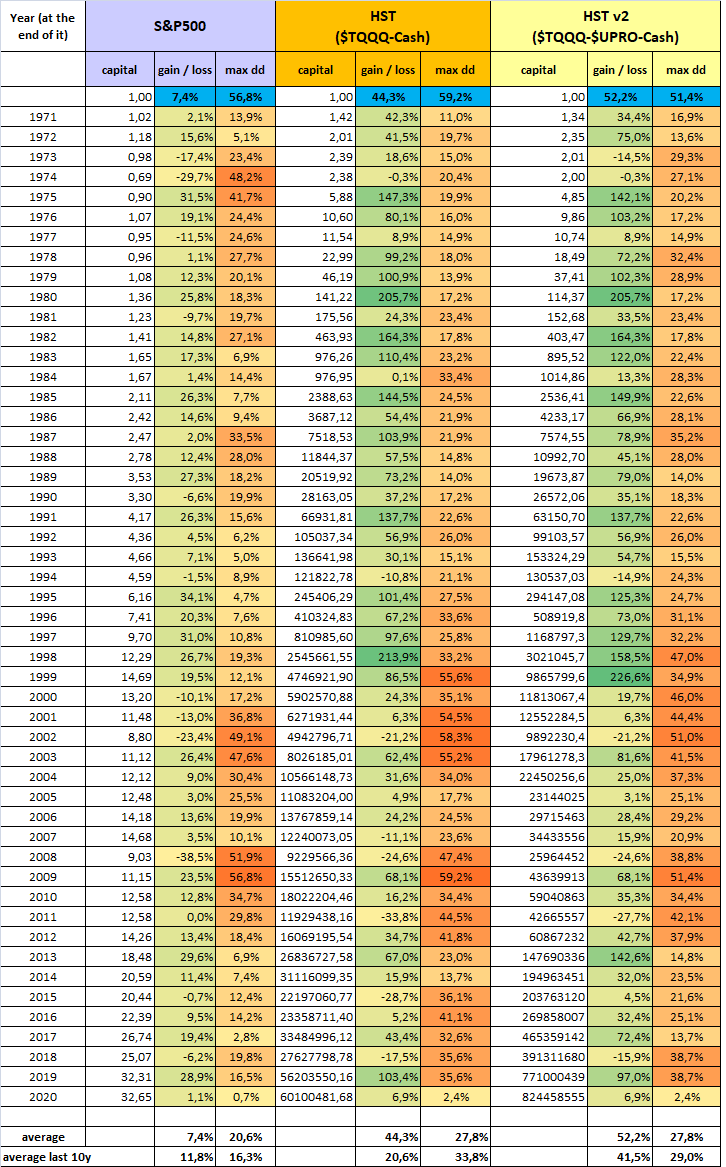No, it does not use stop loss strategy.
Why?
Don't we wanna save our capital in case of main drawdowns or bear markets? Yes, we do. So why don't we simple go to Cash when the most reactive indicator (Technical Indicator 1) says so?
If we turn to cash as soon as the first Tech indicators says would suggest (which is basically a stop loss), the performances will be hardly affected.
We've simulated to shift among only two positions ($TQQQ-Cash) instead of the three positions deisgned by the HST model ($TQQQ-$UPRO-Cash), and here are the performances:

- Average annual yield drops from 52% to 44% and the max drawdown is not significantly reduced. Morover, see the last 10 years averages:
- the average yield of such model is only 20.6%, versus the 41.5% of the HST variant 2.
Bottom line
Going cash too soon hasn't been really useful
- nor to improve yields (they actually drop)
- nor to reduce drawdowns (they are very similar)
Basically this is because there are too many false positives:
You go cash soon, and think you can save the capital, but many times you lose also the quick recovery that the HST model usually takes advantage of.
That is why the HST model considers also a second tech indicator, and a third fundamental indicator:
- The model does not follow too quick moves of the market (false positives) and
- it considers the general state of the economy before going to cash (bear markets are very unlikely if the economy is healthy).
Obviously, this is true for a long-term perspective. Remember that investing with a Leveraged ETF is a risky operation.
We always suggest to evaluate investing with non-leveraged ETFs (like $SPY and $QQQ), you can apply the same model, but you will reduce drawdowns.

